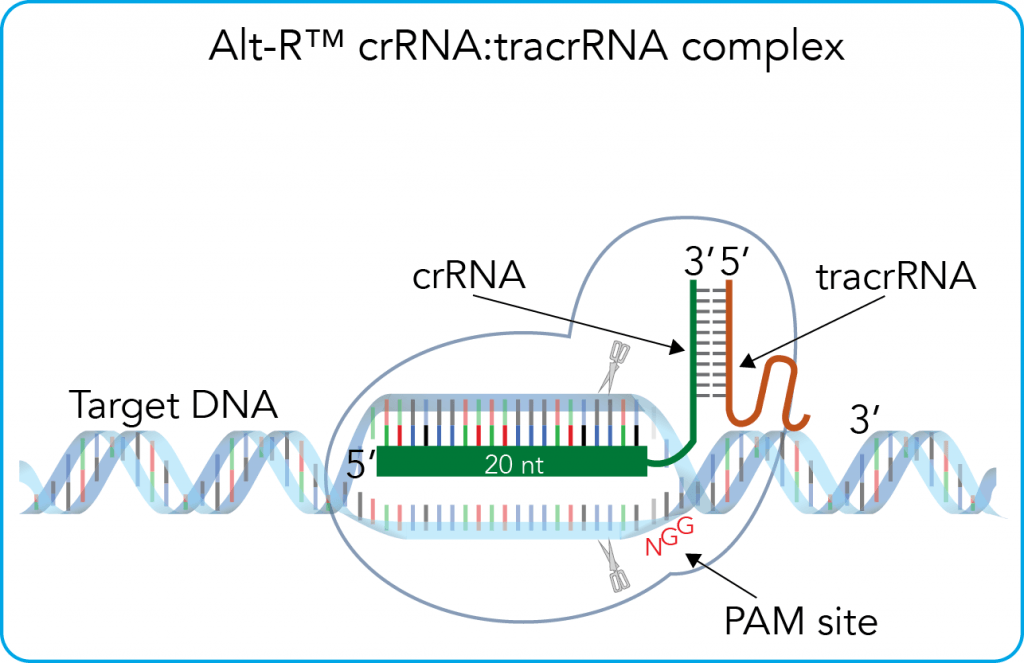IDT Launches New CRISPR with Increased Editing Efficiency

Integrated DNA Technologies (IDT) has launched the Alt-R™ CRISPR-Cas9 System, a genome editing tool based on the S. pyogenes CRISPR/Cas immune system. IDT has optimized CRISPR RNA (crRNA) and trans-activating CRISPR RNA (tracrRNA) sequences for increased efficiency and lower toxicity, and eliminates the need of in vitro transcription and purification.
CRISPR/Cas9 is a prokaryote immune system directed against foreign DNA, which is incorporated in the host genome. When this DNA is transcribed, the resulting guide RNA (gRNA) binds Cas endonucleases and targets them to complementary invader DNA. Since 2012 the system is used as a gene editing tool, by previously engineering the gRNA to target desired sequences.
The natural gRNA is composed of crRNA and tracrRNA. crRNA is transcribed from the CRISPR loci, where the alien DNA sequences are incorporated after the first invasion. crRNA is thus complementary to the alien DNA. tracrRNA is responsible for activating the CRISPR system; it binds crRNA forming a duplex that must be cleaved by RNase III to obtain the mature crRNA-tracrRNA hybrid that guides Cas9 to cut the DNA.
When editing the genome with CRISPR, there are several ways of introducing the gRNA in the cell, but each method has its drawbacks. A plasmid vector that contains the gRNA sequence can be introduced and expressed in the cell, but this system is ineffective and often acts off-target. In vitro expression of gRNA is expensive and its introduction can cause a host immune response. gRNA chemical synthesis is problematic due to gRNA length.

The chemically synthesized crRNA and tracrRNA hybridyze and join the Cas9 endonuclease, targeting it to cleave DNA. 20 nucleotides of crRNA are complementary to the target sequence, right upstream the PAM site on the opposite DNA strand. DNA is cleaved upstream the PAM site. Credit: IDT
Optimization of crRNA and tracrRNA sequences
IDT has been looking for a long time for an improved method for gRNA delivery into the host cell. After extensive research, IDT found out that reducing crRNA and tracrRNA lenght to 36 and 67 was nucleotides was not only possible but also increased gRNA efficiency, obtaining more on-target events. The shorter RNA sequences can be more easily synthesized and are less prone to activate the host immune system. This approach avoids viral or plasmidic introduction of DNA sequences and their internal transcription, or in vitro transcription and purification.
Dr. Garrett Rettig from IDT will present a webinar about the innovative technology on November 4, 2015 (9 am and 1 pm CST). He will talk about the Alt-R CRISPR-Cas9 components, design and experimental procedure.
Source: IDT
